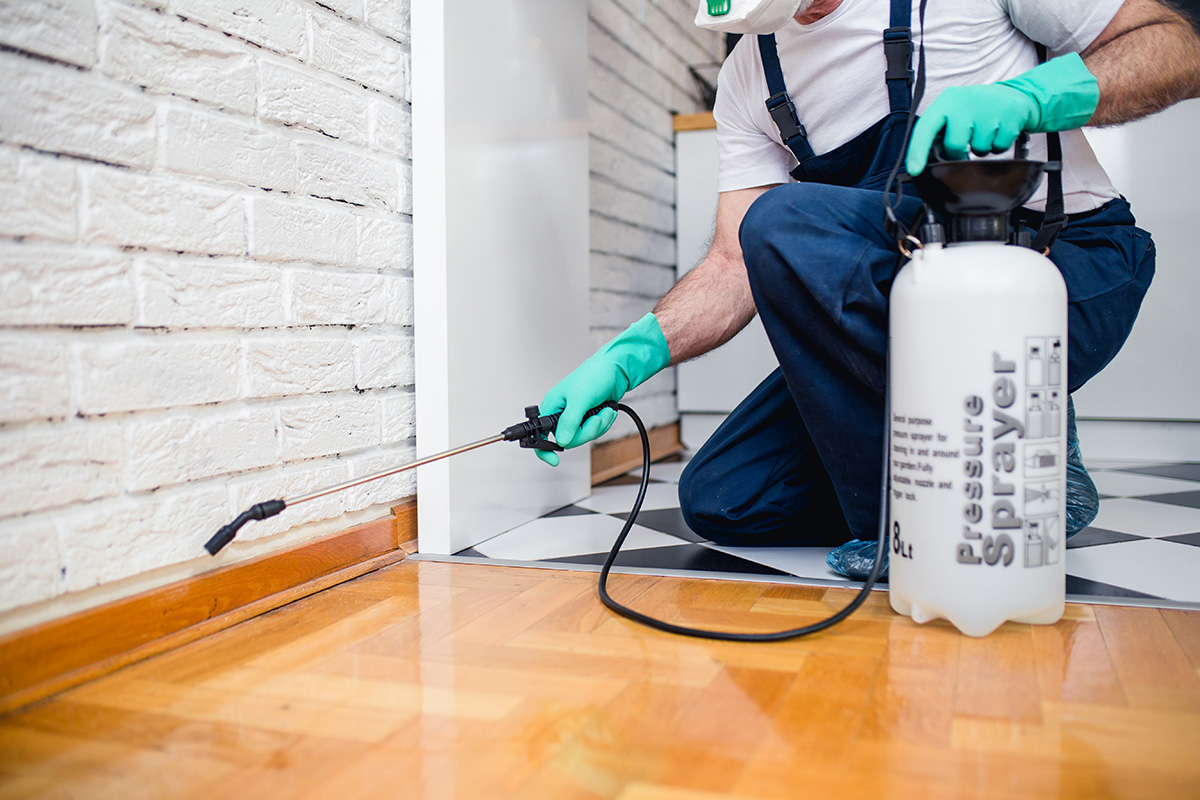A1 Charlotte Pest Control Companies - Your Local Pest Specialists
Wiki Article
Bed Bug Treatment Failure: Comparing Chemical Vs. Non-Chemical Solutions
In the world of insect control, especially when dealing with the consistent problem of bed pests, the choice between chemical and non-chemical treatment remedies can be a pivotal one. Both techniques offer unique benefits and disadvantages, influencing elements such as performance, safety factors to consider, and total expense. By checking out the nuanced information of each technique, a clearer understanding of which course to pursue in resolving a bed bug problem can be obtained.Effectiveness of Chemical Treatments
Chemical therapies for bed pest infestations have been commonly recognized for their powerful and fast efficiency in eradicating these parasites. When thinking about the efficiency of chemical therapies, it is essential to comprehend that they can offer a quick and extensive solution to a bed insect trouble.In addition, chemical therapies have the benefit of using residual results, suggesting that they can remain to get rid of bed insects even after the initial application. This recurring action is especially useful in combating any kind of possible re-infestations. In addition, the quick activity of chemical treatments can bring relief to individuals facing severe bed insect invasions, enabling them to regain control of their home swiftly.
Safety And Security Worry About Chemical Solutions
One essential facet that requires careful factor to consider when utilizing chemical solutions for bed pest treatment is ensuring the security of owners and the atmosphere. Direct exposure to specific chemicals utilized in bed pest treatments can lead to respiratory concerns, skin inflammation, or other damaging reactions, especially in people with pre-existing conditions or sensitivities.Furthermore, the ecological influence of chemical solutions is another significant consideration. Some pesticides used in bed insect therapies may be harmful to valuable bugs, wild animals, and ecosystems if they seep right into the soil or water systems. It is necessary to utilize chemical treatments sensibly, adhering to safety guidelines, and thinking about much less poisonous options to mitigate these threats and make certain the secure and reliable management of bed bug problems.
Advantages of Non-Chemical Techniques
Considering the potential security issues and environmental effect associated with chemical remedies for bed insect treatment, exploring non-chemical methods provides an encouraging option with a number of unique advantages. Non-chemical techniques use a safer alternative for families, specifically those with family pets, children, or individuals delicate to extreme chemicals. These techniques get rid of the risks of exposure to toxic substances, reducing the potential for adverse health effects. Moreover, non-chemical therapies are eco-friendly, as they do not add to air or water air pollution, making them a lasting choice for bug control.In addition, non-chemical options can be reliable in targeting bed bugs, including hard-to-reach areas where chemical therapies may not pass through. Methods such as heat therapy, vacuuming, steam cleansing, and bed mattress coverings offer extensive removal without the usage of hazardous chemicals. In addition, non-chemical methods can be much less disruptive, needing minimal preparation and enabling quicker reentry right into dealt with areas. On the whole, selecting pest extermination service non-chemical bed pest treatment techniques not just focuses on security and environmental management however additionally guarantees thorough and effective pest control.
Limitations of Non-Chemical Treatments

Additionally, non-chemical treatments commonly call for multiple applications to achieve successful removal. This can be taxing and might not always guarantee total elimination of all bed pests and their eggs, specifically in hard-to-reach or covert areas.
Furthermore, the success of non-chemical treatments heavily depends on correct implementation and thoroughness, which can be challenging for individuals without expert knowledge. Insufficient application of non-chemical methods might result in incomplete obliteration, causing relentless infestations and the demand for extra treatments.
Consequently, while non-chemical therapies have their benefits, it is necessary to acknowledge these constraints and consider them when determining this page the most effective strategy for managing bed insect infestations.
Price Contrast: Chemical Vs. Non-Chemical Options
Given the restrictions related to non-chemical therapies, a crucial facet to assess in the context of bed insect administration is the cost comparison in between chemical and non-chemical choices. Chemical treatments usually entail the application of pesticides by experts, which can range from $250 to $900 per space, depending on the extent of the problem and the size of the area to be treated. On the other hand, non-chemical treatments like warmth treatment or vapor can be extra pricey, with prices ranging from $1,000 to $6,000 for a whole home. While the preliminary cost of chemical therapies may seem reduced, several therapies might be needed to fully eradicate the problem, possibly boosting the general cost. On the other hand, non-chemical alternatives might supply a more sustainable and environment-friendly her response remedy, although they can be cost-prohibitive for some individuals. Eventually, when taking into consideration the expense of bed insect therapy choices, it is very important to weigh the ahead of time costs against the performance and long-lasting sustainability of the chosen method.Final Thought

Thinking about the possible safety problems and environmental influence associated with chemical remedies for bed bug treatment, discovering non-chemical approaches provides an encouraging alternative with a number of distinctive benefits.Offered the limitations connected with non-chemical treatments, a crucial facet to assess in the context of bed pest administration is the cost comparison in between chemical and non-chemical options. In comparison, non-chemical therapies like warm treatment or vapor can be more expensive, with costs ranging from $1,000 to $6,000 for an entire home. While the initial cost of chemical therapies might appear reduced, numerous treatments may be called for to totally eliminate the invasion, potentially boosting the total price.In final thought, when contrasting chemical and non-chemical bed bug treatment options, it is crucial to consider performance, safety, advantages, constraints, and cost.
Report this wiki page